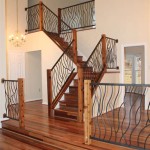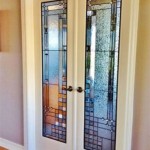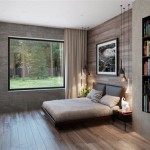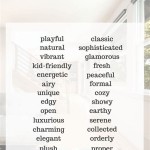Modern Interior Design Explained
Modern interior design often gets confused with contemporary design. While they share some overlapping elements, modern design refers specifically to the design style that emerged in the early to mid-20th century. It's rooted in the modernist movement, emphasizing function, clean lines, and a rejection of ornamentation.
Key Characteristics of Modern Interior Design
Modern interiors are defined by several key characteristics that distinguish them from other design styles. Understanding these elements is crucial for achieving a truly authentic modern aesthetic.
- Emphasis on Functionality: Form follows function is a core principle.
- Clean Lines and Geometric Shapes: Straight lines, rectangular forms, and a distinct lack of curves or ornate detailing are prevalent.
- Minimalist Approach: Clutter is avoided, and spaces are kept open and airy.
- Use of Natural Materials: Materials like wood, leather, stone, and metal are favored for their inherent beauty and durability.
- Neutral Color Palettes: Often features a base of white, beige, or gray, accented with bold pops of color.
- Open Floor Plans: Walls are minimized to create a sense of spaciousness and flow.
The History and Influences of Modern Design
Modern design emerged from a reaction against the ornate and elaborate styles of the Victorian era. It embraces simplicity and functionality, influenced by several key movements and schools of thought.
- Bauhaus: This German art school emphasized the unity of art, craft, and technology, heavily influencing modern design's focus on functionality and simple forms.
- International Style: Characterized by rectilinear forms, open floor plans, and a lack of ornamentation.
- Mid-Century Modern: This specific period of modern design, popular from the 1930s to the 1960s, is recognized for its organic shapes, use of wood, and integration with nature.
Furniture in Modern Interiors
Furniture plays a vital role in establishing a modern aesthetic. Pieces are chosen not only for their appearance but also for their practicality and contribution to the overall minimalist feel.
- Simple and Functional Designs: Furniture serves its purpose without unnecessary embellishments.
- Use of Natural Materials: Wood, leather, and metal are common choices, creating a sense of warmth and authenticity.
- Iconic Pieces: Mid-century modern furniture designs have become iconic, with pieces by designers like Charles and Ray Eames and Arne Jacobsen still highly sought after.
- Low-Profile Furniture: Keeping furniture close to the ground enhances the feeling of spaciousness.
Color Palettes in Modern Design
Color is used strategically in modern interiors to create a sense of calm and sophistication. Neutral backdrops allow pops of color to stand out, while the overall scheme remains balanced and harmonious.
- Neutral Base: White, beige, gray, and black are frequently used as the foundation of the color palette.
- Accent Colors: Bold primary colors, such as red, blue, and yellow, can be used sparingly as accents.
- Natural Tones: Earthy tones like brown, green, and terracotta can add warmth and connect the space to the outdoors.
Materials and Textures in Modern Interiors
The selection of materials and textures is crucial in creating the desired atmosphere in modern spaces. The focus is on honesty of materials and their inherent beauty.
- Natural Materials: Wood, stone, leather, and metal are favored for their durability and visual appeal.
- Emphasis on Texture: While ornamentation is avoided, texture can be introduced through natural materials like wood grain or woven textiles.
- Exposed Brick or Concrete: These industrial materials can add a raw, urban feel to modern spaces.
Lighting in Modern Interiors
Lighting plays a critical role in enhancing the functionality and ambiance of modern spaces. Natural light is maximized, and artificial light is used strategically to create different moods.
- Natural Light: Large windows and open floor plans allow for maximum natural light penetration.
- Ambient Lighting: Recessed lighting, track lighting, and pendant lights provide general illumination.
- Task Lighting: Table lamps and floor lamps are used to provide focused light for specific tasks.
- Statement Lighting: Iconic mid-century modern light fixtures can serve as both functional and decorative elements.
Decor and Accessories in Modern Design
Accessories are used sparingly in modern design, chosen carefully to complement the overall aesthetic without cluttering the space. Each item should have a purpose and contribute to the minimalist feel.
- Minimalist Approach: Avoid excessive decoration and clutter.
- Functional Decor: Choose items that serve a purpose, such as storage containers or functional art pieces.
- Abstract Art: Geometric shapes and abstract artwork complement the clean lines and minimalist aesthetic.
- Indoor Plants: Greenery can add life and vibrancy to a modern space while maintaining a connection to nature.
Modern Interior Design vs. Contemporary Interior Design
While often used interchangeably, modern and contemporary design are distinct styles. Understanding the differences is key to achieving the desired aesthetic.
- Modern Design: Refers to a specific historical period and design movement, with a focus on clean lines, functionality, and natural materials.
- Contemporary Design: Encompasses current trends and styles, often incorporating elements from various design movements. It's more fluid and ever-evolving.

Contemporary Vs Modern Interior Design Everything To Know Décor Aid

Contemporary Design Style And The Essentials To Master It Décor Aid

Difference Between Modern Vs Contemporary Interior Design

Contemporary Vs Modern Interior Design Everything To Know Décor Aid

Modern Interior Design Guide What Is 2024 Masterclass

Contemporary Vs Modern Interior Design Explained Safavieh Home

Contemporary Design Style And The Essentials To Master It Décor Aid

Urban Modern Interior Design Defined Everything To Know Décor Aid

Everything You Need To Know About Modern And Contemporary Design

Modern Contemporary Interior Styles Explained Flooring America
Related Posts








